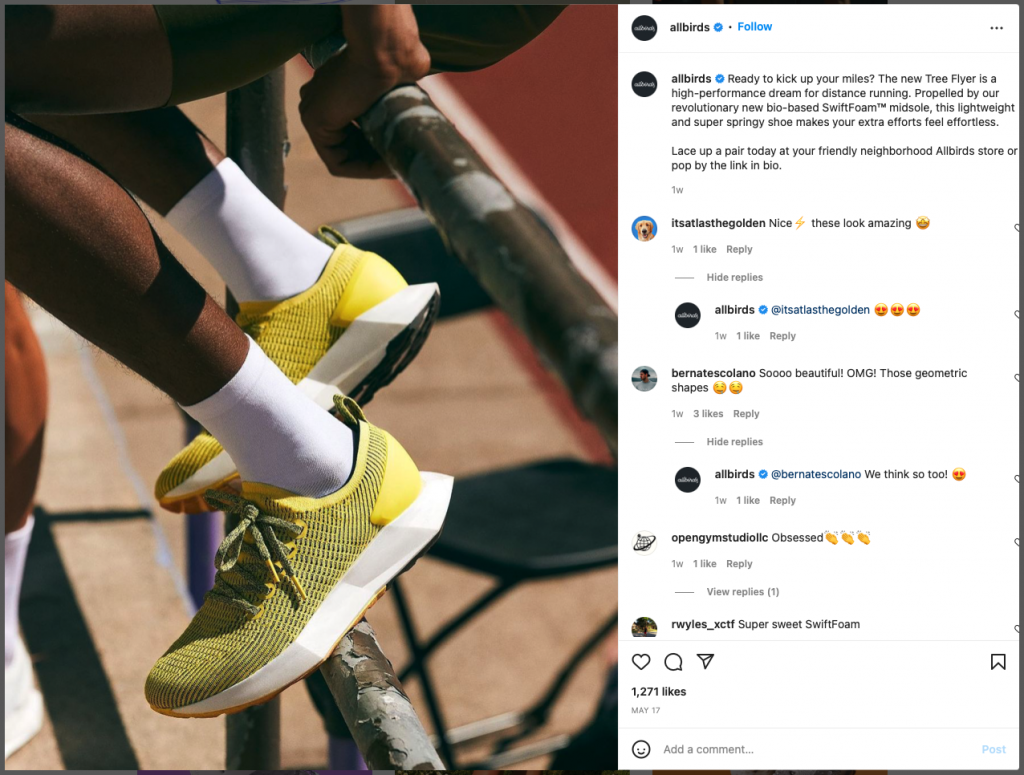Employing social proof in your marketing strategies is non-negotiable in 2022. At least if you want to help your ecommerce brand and products stand out in a sea of competition.
According to research data, most buyers rely on reviews, ratings, and other instances of social proof when making purchasing decisions:
- Power Reviews found that 99.9% of consumers read reviews when shopping online, with 98% saying they feel that reviews are essential resources for making the right purchasing decisions.
- Partoo found that 3 out of 5 people won’t visit an establishment with a rating below 3.5/5 stars.
- ReviewTrackers discovered that most customers use rating filters when browsing products, with most of them automatically disregarding any business/product that scores lower than four stars. Moreover, review interaction is up by 50% compared to pre-pandemic levels, signaling that people are becoming pickier about what businesses to visit and support.
- And according to BrightLocal, there’s been a 9% year-on-year increase in people using the internet more than once per week to read reviews about local businesses.
This data should be more than enough to prove that social proof is irreplaceable in 2022. For starters, it will definitely aid you in earning your potential customers’ trust.
Plus, it will also allow you to position your brand as an authority in your niche and help your potential buyers make the best possible purchasing decisions to solve their pain points.
And, of course, it will ensure the long-term success of your business.
So, without further ado, let’s look into the best practices of utilizing social proof in ecommerce in 2022.
Use your blog to tell customer stories
One of the best ways to employ social proof in your ecommerce store to generate trust is to tell customer stories.
This approach serves to display the ways your brand can positively impact your audience’s lives. But on top of that, it also gives a much-needed personal touch to social proof, which is often presented blandly by simply embedding star ratings or reviews.
By showcasing customer experiences your audience can relate to, you’ll allow potential buyers to imagine the benefits they’ll receive by investing in their products.
This automatically leads to higher engagement rates and, consequently, a higher chance of web visitors converting into customers.
If you decide to go this route, you have to understand that the customer stories on your blog don’t have to talk exclusively about your products. For a more relatable effect, try, instead, to put the spotlight entirely on your customers and their experiences.
For example, Real Thread’s interview with Ugmonk’s founder Jeff Sheldon focuses on the young entrepreneur’s experience of starting a business fresh out of college and the challenges he had to overcome when deciding to launch an apparel brand.
Because many of Real Thread’s customers are entrepreneurs, this interview gives them the value of reading about a successful peer’s experience in an approachable and inspiring format they are sure to appreciate.
And the fact that they’ll build on that appreciation by remembering Real Thread as a reputable and trustworthy supplier of textile products is another huge plus.
Highlight industry awards and certifications
Considering the top reasons buyers don’t go through with their purchases in online stores, you’ll discover that almost 20% of people do so due to a lack of trust.
Consumer trust levels are so low in 2022 that for 59% of people, distrust (especially in governments and media) is their default state of mind. Fortunately for businesses, however, not everything is so bleak. Data shows that people still believe in businesses and NGOs to drive change and deliver results.
Nevertheless, to prove that your brand is trustworthy, it’s not a bad idea to look for instances of social proof that will convince your target audience to convert.
Trust badges in displaying industry awards and verifications can be an excellent tool to do just that.
They show that your organization has been recognized as one of the best in your field of expertise. They can prove that your products are high quality and match specific standards. And they might even be the necessary proof showing that your brand delivers an exceptional customer experience.
Naturally, the best way to utilize this form of social proof is to ensure that it’s highly noticeable on your brand’s homepage and landing pages.
For an example of this tactic in action, check out the Nature Made website.

There, you’ll see that it contains a prominent section featuring certifications from industry authorities like the USP, which prove that the brand’s supplements are sure to deliver the quality buyers expect.
Combine customer reviews with UGC
If you’re just getting started with employing social proof in your ecommerce store, then basic reviews and ratings are good enough to prove your brand’s credibility.
However, if you want to ensure that the social proof on your website has a genuine impact on your brand’s success, you’ll have to go with an approach that’s a bit more advanced.
Something as straightforward as allowing your customers to add images to their reviews can go a long way in convincing potential customers to convert.
Especially if you consider that 88% of buyers specifically look for user-generated visuals before making a purchase and that 65% of people are more likely to trust products that include UGC in the reviews section.
For an excellent example of an ecommerce store that utilizes this strategy to its full advantage, check out GILI Sports. The brand highlights user reviews that include images, but that’s not all.
Note how effectively it employs user-submitted pictures to expand the market for its products.
In the example below, GILI uses UGC to prove that paddleboarding isn’t just for watersports lovers and adventure seekers.
On the contrary, the brand proves that the sport can very well be enjoyed by a variety of people, regardless of their affinities or physical fitness levels.

Integrate UGC into your home page
For an alternative method of getting the most out of user-submitted visuals, it’s also a great idea to find ways to incorporate UGC into your homepage.
Something as simple as embedding social media photos on your website can help you deliver social proof in a format loved by consumers.
Plus, re-sharing the content sent to you by your customers can further boost engagement. It can also help build stronger relationships in the post-purchase stage of the sales funnel.
Lastly, it can help you attract potential buyers looking to support brands who understand their customers and prioritize customer experience over sales.
The great thing about this approach to social proof is that it’s super-easy to pull off.
For example, you can do something as uncomplicated as Frankbody and integrate Instagram posts containing specific hashtags on your homepage.
On the one hand, this will show potential customers that your existing buyers are happy with the purchases. On the other hand, it will nurture customer loyalty, making your customers more likely to come back and automatically boosting KPIs such as customer lifetime value.

Give your customers a voice (and face) with video
Did you know that video is one of the most practical content types you can employ in 2022?
According to research from HubSpot, video was the leading media format employed by brands in 2021, with 59% of marketers having chosen it as their go-to.
And the truth is, video is only going to get bigger. That’s not just because it’s so effective at driving results but also because consumers are continually proving that video is their preferred way of consuming content online.
So, why not use the popularity of video to ensure your social proof is successful at convincing your audience to convert?
You don’t have to opt for a lengthy and expensive production process.
On the contrary, something as simple as showcasing short video testimonials or interviews on your ecommerce homepage will suffice.
On the one hand, this will humanize the instances of social proof on your site, giving a face to the people supporting your brand (and making their words more powerful in proving your company has got what it takes to make customers happy).
On the other hand, it will make the testimonials on your site come off as more authentic, as these social proof videos will be delivered in your client’s own voices, without editing, beautification, or elaborate scripting.
For inspiration on how to get video testimonials right, check out the Bay Alarm Medical website.
This brand uses the accessible and relatable format of video interviews to build credibility and convince potential customers to convert, allowing happy customers to share their genuine experiences, including those that come off as just a tad too “unfiltered.”
Interact with your customers on social media
Distributing content on social media is one of the best ways to engage your audience. After all, the number of active social media users is expected to reach 4.41 billion by 2025.
And research from TINT reveals that 58.6% of consumers are most likely to interact with content published on social media. Moreover, the same report revealed that social networks are the preferred marketing communication channel for 46.6% of buyers.
But here’s the deal. If you want to use your social media marketing strategy for more than “merely” raising brand/product awareness, you have to start using it to generate social proof. And, to succeed at this, you have to do two things.
Firstly, you need to invest in content that will successfully engage your audiences. Short-form videos will be particularly effective in 2022, as will posts that showcase your brand’s authenticity, reliability, and core values.
Secondly, you will also have to speed up your response times.
The latest report from Sprout Social shows that 77% of US consumers expect brands to respond to them on social within 24h of contacting them and that customer care and community-building make up 67% of most successful brands’ social media strategies.
So, what does this method of generating social proof look like in practice?
Well, if you’re looking for inspiration, it’s not a bad idea to check out the Allbirds Instagram page.
As you can see, the brand doesn’t just post images on the platform and then lets them be. Instead, it employs next-level community management.
Allbirds takes the time to reply to every comment, ensuring that its followers feel rewarded for interacting with the brand and making them more likely to leave their impressions on future posts.

Showcase (appropriate) celebrity endorsements
According to a recently published study from Oracle, influencer marketing is actively shaping the way consumers perceive brands and purchase products.
The data reveals that:
- 37% of buyers trust influencers.
- 28% of people discover new products and brands through influencers.
- 13% of consumers turn to social media celebrities to inform their purchasing decisions.
But while the findings clearly indicate the importance of investing in influencer marketing to generate social proof for ecommerce businesses, the key to getting the highest ROI from the approach lies in finding the best collaborators for your brand.
You see, the majority (70%, to be more precise) of ecommerce businesses work with nano and micro-influencers.
So, if you want to stand out from your competitors, you might have to diversify the voices supplying testimonials about your brand’s products.
This doesn’t mean eliminating content creators with smaller followings from your social media strategies. Instead, it simply signals that you should explore ways to source social proof from industry experts and legitimate celebrities (in addition to that provided by customers and nano-influencers).
For an example of an ecommerce brand that does this well, check out Transparent Labs.
This company collaborates with multiple internet personalities, all of whom have their unique way of contributing to the brand’s trustworthiness. But the one celebrity on whose authority the brand relies the most is Hafþór Börnsson.
This professional strongman rose to fame by appearing as The Mountain in Game of Thrones and has a huge Instagram presence with more than 4 million followers.
And, with such a strong influence, it’s no surprise that he’s heavily featured in most of the Transparent Labs’ posts — both on the brand’s blog as well as on its social media profile.

Include star ratings in your product links
Lastly, as you look for effective ways to add social proof to your website like using, don’t forget that its most consequential impact will be in the promotional areas of your site.
After all, that’s where your potential buyers will be making their purchasing decisions.
If you’re not entirely sure what these pages are, don’t worry. The most impactful web areas to employ social proof include product pages and product collection pages.
So, how do you employ star ratings to ensure ecommerce success in 2022?
Well, if you can, couple them with “top sellers” and “most popular” badges. To ensure that this strategy yields results, it’s not a bad idea to include the number of people who have rated your products.
Check out how they did it on the 100% Pure homepage.

Final thoughts
There you have it: the best practices for utilizing social proof in 2022.
As you can see, most of these strategies rely on data about consumer purchasing behavior.
And while these tactics will yield results during the upcoming period, they won’t necessarily always be the best way to display reviews, ratings, and testimonials on your website.
So don’t forget to keep up to date with industry trends and consumer behavior.
And most importantly, do your best to keep an eye on your ecommerce store’s performance.
After all, a quick look at your analytics will easily tell you whether the marketing strategies you’re using are getting results or if there’s still some room for improvement.
If you want to start displaying ratings and testimonials on your eCommerce site, install Premio’s Stars Testimonials. It is user-friendly and very functional for WordPress users. Check it out!
Author Bio
Nate Ginsburg is the founder of SellerPlex. He’s also an investor, consultant, yoga enthusiast, and world traveler. He’s a big believer in the power of continuous growth and he’s passionate about building meaningful relationships with other entrepreneurs.









